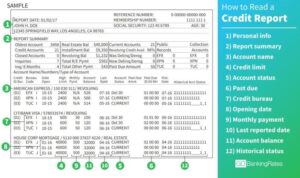Dive into the world of portfolio rebalancing tips, where savvy investors navigate the complex waters of financial success with precision and strategy. From understanding the importance of rebalancing to exploring asset allocation strategies, this guide will equip you with the knowledge needed to optimize your investment portfolio effectively.
Get ready to discover the key principles and practical tips that will empower you to make informed decisions and secure your financial future.
Importance of Portfolio Rebalancing
Portfolio rebalancing is a crucial aspect of long-term financial success. By periodically realigning the asset allocation in your investment portfolio, you can ensure that your risk exposure is managed effectively while optimizing returns over time.
Managing Risk and Optimizing Returns
- Rebalancing allows you to maintain your desired risk level by adjusting the allocation of assets based on market performance. For example, if stocks have outperformed bonds, rebalancing would involve selling some stocks and buying more bonds to bring the portfolio back to its target allocation.
- Regular rebalancing also helps to capture gains and reinvest in underperforming assets, allowing you to take advantage of opportunities for growth and potentially increase overall returns.
- Without rebalancing, your portfolio may become overexposed to certain asset classes, leading to higher risk levels than intended. In the long run, this can result in significant losses during market downturns or periods of volatility.
Frequency of Rebalancing
When it comes to portfolio rebalancing, the frequency at which you make adjustments can significantly impact your investment outcomes. Let’s explore different approaches to determining how often a portfolio should be rebalanced and the guidelines for assessing when it’s the right time to make those changes.
Determining Rebalancing Frequency
- Annual Rebalancing: Some investors prefer to rebalance their portfolios on an annual basis. This approach allows for adjustments to be made once a year, providing a structured timeline for monitoring and managing investments.
- Threshold-based Rebalancing: Another approach involves setting specific thresholds for asset allocation. When an asset deviates from its target allocation by a certain percentage, rebalancing is triggered. This method ensures that adjustments are made only when necessary.
- Time-based Rebalancing: Investors may choose to rebalance at regular intervals, such as quarterly or semi-annually, regardless of market conditions. This approach helps maintain a consistent investment strategy over time.
Assessing the Right Time to Rebalance
- Market Conditions: Monitor market trends and evaluate how they impact your portfolio. Rebalancing during periods of extreme volatility or significant market shifts may be necessary to maintain your desired asset allocation.
- Life Events: Changes in your financial goals, risk tolerance, or time horizon may signal the need for portfolio rebalancing. Adjustments should align with your current financial situation and investment objectives.
- Tax Considerations: Be mindful of tax implications when rebalancing your portfolio. Selling assets to reallocate funds can have tax consequences, so it’s important to factor this into your decision-making process.
Pros and Cons of Rebalancing Frequency
- Pros of Rebalancing Frequently: Regular rebalancing can help maintain target asset allocations, control risk exposure, and stay aligned with investment objectives. It allows for adjustments to be made in a timely manner based on market conditions.
- Cons of Rebalancing Infrequently: Infrequent rebalancing may lead to portfolio drift, where asset allocations deviate significantly from the target weights. This can result in higher risk exposure or missed opportunities for optimizing returns.
Asset Allocation Strategies

Asset allocation strategies are crucial for portfolio rebalancing to ensure a well-diversified investment mix that aligns with an individual’s financial goals and risk tolerance. By strategically adjusting the allocation of assets within a portfolio, investors can optimize returns and manage risk effectively.
Strategic vs. Tactical Asset Allocation
Strategic asset allocation involves setting target allocations for various asset classes based on long-term financial objectives and risk tolerance. This approach aims to maintain a consistent investment mix over time, periodically rebalancing to realign with the original targets.
Tactical asset allocation, on the other hand, involves making short-term adjustments to the portfolio based on market conditions and economic outlook. This approach allows investors to capitalize on short-term opportunities or mitigate risks as they arise.
Examples of Asset Classes Adjustment
- Equities: If the stock market outperforms other asset classes and the equity portion of the portfolio exceeds the target allocation, investors may consider selling some stocks to rebalance.
- Bonds: In a rising interest rate environment, bond prices may decline. Investors may need to adjust their bond holdings to maintain the desired allocation.
- Real Estate: Real estate investments can provide diversification, but if the real estate market becomes overvalued, investors may need to reduce exposure to this asset class.
Tools and Resources
When it comes to monitoring and rebalancing your portfolio, there are several tools and software options available to assist you in making informed decisions.
Portfolio Tracking Software
Utilize portfolio tracking software like Personal Capital, Mint, or SigFig to keep a close eye on your investments and easily identify areas that need rebalancing.
Robo-Advisors
Consider using robo-advisors such as Betterment or Wealthfront, which can automatically rebalance your portfolio based on your specified preferences and risk tolerance.
Financial News Websites
Stay informed about market changes by regularly visiting financial news websites like CNBC, Bloomberg, or Yahoo Finance to get real-time updates on stock performance, economic indicators, and market trends.
Online Calculators
Take advantage of online calculators provided by financial institutions and brokerage firms to analyze your current asset allocation and determine if any adjustments are needed to realign your portfolio.






